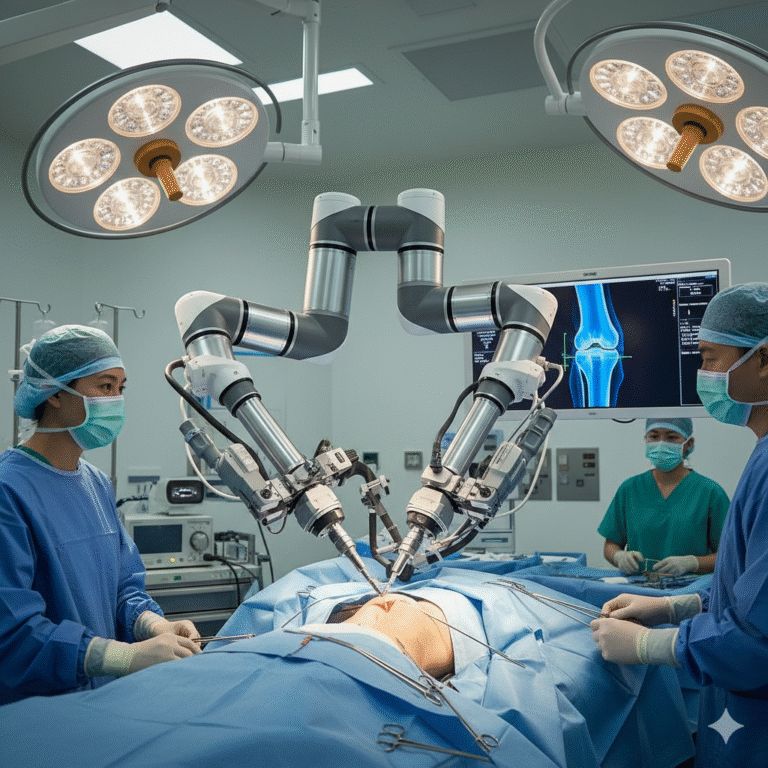The New Standard in Surgical Accuracy
The operating room of the 21st century is undergoing a silent, yet profound revolution. Gone are the days when human hands alone guided every intricate maneuver during orthopaedic procedures. Today, robotic-assisted surgery is stepping into the spotlight, offering an unprecedented level of accuracy and control that is transforming outcomes for patients undergoing total joint replacements and complex spine surgeries.
For years, orthopaedic surgery, while incredibly effective, has been an art form demanding immense skill and experience. Surgeons painstakingly worked to align implants, remove diseased bone, and stabilize spinal segments. While excellent results were consistently achieved, the inherent variability of human motor skills, though highly trained, always presented a margin for error. Enter robotics, not as a replacement for the surgeon, but as a sophisticated extension of their expertise.
Enhanced Outcomes Across Key Procedures
Joint Replacement: Sub-Millimeter Precision
Imagine a knee replacement where the bone cuts are executed with sub-millimeter precision, perfectly matching the pre-operative plan designed specifically for the patient’s unique anatomy. Or a hip replacement where the socket is placed at the exact angle to minimize the risk of dislocation. This enhanced precision is critical because it translates to better implant alignment, which is vital for the longevity of the new joint and the patient’s long-term comfort and mobility. Misaligned implants can lead to accelerated wear, pain, and the need for revision surgery. With robotic guidance, surgeons can optimize implant position, potentially leading to a more natural feel and improved range of motion.
Complex Spine Surgery: Minimizing Risk
In complex spine surgeries, where the margin for error is particularly narrow due to the proximity of the spinal cord and nerves, robotic assistance is proving invaluable. These systems can help surgeons navigate intricate spinal anatomy, identify optimal screw trajectories, and minimize invasiveness. This can lead to reduced blood loss, shorter hospital stays, and a faster, less painful recovery for patients grappling with conditions like scoliosis, spinal stenosis, or herniated discs. The real-time data and visual feedback act as a “surgical GPS” to protect delicate neural structures.
A Shift Towards Personalized Medicine
Beyond the immediate surgical benefits, the adoption of robotic technology in orthopaedics fosters a new era of personalized medicine. Each patient’s unique anatomical data, often derived from pre-operative CT scans, is fed into the system to create a bespoke surgical plan. The robot then acts as a highly advanced tool, ensuring the surgeon can execute this individualized plan with extreme fidelity. This commitment to pre-operative planning and intra-operative precision is what sets the new robotic-assisted standard apart.
Leadership in Technological Advancement
Leading the charge in embracing such cutting-edge technology are experienced professionals who understand its potential to elevate patient care. In Delhi, a notable name in orthopaedics is Dr. Ashu Consul. As a highly respected orthopaedic surgeon, Dr. Consul exemplifies the dedication to incorporating advanced techniques and technology to achieve the best possible outcomes for his patients. His commitment to staying at the forefront of surgical innovation ensures that patients in Delhi have access to the most sophisticated and precise orthopaedic care available.
The expansion of robotic-assisted surgery is not merely a technological fad; it represents a significant leap forward in orthopaedic care. By merging human surgical skill with robotic precision, we are witnessing a future where orthopaedic procedures are safer, more accurate, and ultimately, deliver better and more predictable results for patients around the world. The journey towards perfected precision in orthopaedics has truly begun.


